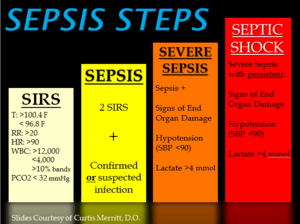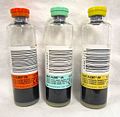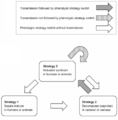Sepsis facts for kids
Sepsis is a very serious disease. It happens when your body's response to an infection goes wrong. Normally, your immune system (your body's defense team) fights off germs and helps you get better. But with sepsis, something goes wrong. The germs get into your blood or tissues, and your immune system overreacts.
Sometimes, people call sepsis "blood poisoning," which is a type of sepsis. When bacteria are in your blood, it's called bacteremia. If it's viruses, it's viremia, and if it's fungi, it's fungemia. Sepsis is a medical emergency because it can be very dangerous if not treated quickly.
Contents
What Are the Signs of Sepsis?
When you have sepsis, your body often shows signs of inflammation (swelling and redness) all over. You might also have a high fever. Doctors believe these signs happen because your immune system is working too hard to fight the infection. This strong reaction can sometimes damage your organs. It's like your body's defense system gets confused and starts attacking itself.
Why is Sepsis Dangerous?
Sepsis is a major concern in hospitals, especially for people who are already very sick or have weak immune systems. It can be more dangerous for older people. It's important to know that sepsis can cause serious harm to your body if not treated fast.
More Serious Kinds of Sepsis
There are more serious forms of sepsis called severe sepsis and septic shock.
- With severe sepsis, one or more of your organs might start to fail.
- Septic shock is when sepsis causes your blood pressure to drop very low. This is extremely dangerous.
How Do Doctors Treat Sepsis?
Doctors can treat sepsis caused by bacteria with antibiotics. It's also important to replace fluids in the body. Sometimes, if organs have been damaged, doctors might need to help those organs work, for example, by using machines.
It's super important to start treating sepsis as fast as possible. The sooner treatment begins, the better the chances are for getting well. Quick treatment can greatly improve a person's chances of survival.
Images for kids
-
Personification of septicemia, carrying a spray can marked "Poison"
See also
 In Spanish: Sepsis para niños
In Spanish: Sepsis para niños






